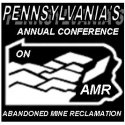
Figure 1. Aspect Raster Layer of a portion of the Northern Anthracite Coalfields

Suitability Layer of a portion of the Northern Anthracite Coalfields related to Solar within coalfield communities and the potential siting on formerly reclaimed abandoned mine lands
The grant really has 3 goals…
- Spent time on outreach and building partnerships across the State to advocate for solar development on formerly reclaimed mine lands and in coalfield communities
- Further develop our Solar Site Selection Criteria GIS Suitability Modeling Tool for GIS now that we have the Anthracite Region covered, and make the tool more robust by adding additional layers
- Provide education, outreach, internships, to advocate for the potential for either small scale community solar or large scale solar development that could lead to jobs, workforce development, and professional skills training like we already do with the Earth Conservancy through their Environmental Workforce Training Program
Staff are reviewing the scope of work and will begin to reach out across PA in the coming weeks ahead looking for partners, regional non-profits, solar developers, landowners with interest in solar development in coalfield communities and on reclaimed abandoned mine lands. We hope to involve existing partners across the State that have been a part of the
PA AML Campaign, including the
Western PA Coalition for Abandoned Mine Reclamation (WPCAMR),
Citizens Coal Council, the
Foundation for PA Watersheds,
Pennsylvania Environmental Council,
Western PA Conservancy,
PA Association of Conservation Districts, and the
Mountain Watershed Association.Utility Companies, like
PPL,
Dominion,
UGI, and others in the Utility Services Territoriers tied into the
PJM Markets and Operations that we are less familiar with, as well as leaders in coalfield communities that would like to see if small scale community solar could work for them at a municipal level will be some of our target audiences to conduct some initial outreach to across the Commonwealth. Economic development agencies, Chambers of Commerces, Industrial Development Authorities, Real Estate Companies, all seem to be integral to the discussion as well. We will be interested to hear from solar developers and companies as we proceed to let us know what some of the hurdles, impediments, opportunities, and incentives that might need to be discussed to direct more attention to former abandoned mine lands for small or large scale solar development projects to get off the ground in PA, like they are in the surrounding states of West Virginia, Kentucky, and Southwestern Virginia in central Appalachia. EPCAMR initially has been working with
AC Power out of New York to work with them to connect them up with landowners that were identified as potentially having land available for consideration. AC Power supported EPCAMR’s initial grant to the Reclaiming Appalachia Coalition in 2020 that led to the development of our Solar Site Selection Criteria GIS Suitability Modeling Tool. EPCAMR has also been reaching out to the
ARIPPA Co-Generation Industry Trade Association group in PA that is a member association because of the large tracts of land they might have available once the waste culm feedstocks are used up to generate electricity that is also placed on to the grid.
The
Build Back Better framework invests
$2.5 billion for planning and installing solar facilities and
community solar projects that serve low-income households or multi-family affordable housing
complexes. Funding will also support development of these facilities in underserved areas and areas
with high energy burden. There are opportunities here that are unprecedented, however, we need to ultimately know what the interests are of those who own the lands that might be the most suitable for solar development. No access, limited grid connectivity, improvements that may need to be made to land, outright acquisition of property, royalties, or short or long-term lease agreements are all discussion points that will need to be on the table and taken into consideration when talking about efforts such as these. The Infrastructure and Investment Jobs Act also will be allocating a significant amount of funding for abandoned mine land reclamation projects across the Commonwealth over the next 13 years that might help to prepare future sites for solar development. At a
press event on December 29, 2021, EPCAMR had the chance to speak and provide examples of future clean energy alternative projects, including solar, that need to be considered as we look to the window of opportunity for federal funds to reclaim additional acreage of mine lands and leverage private sector investment for economic development throughout PA.
EPCAMR will continue to advocate for sustainable and equitable clean energy and alternative energy community economic development projects with the private sector. EPCAMR conducts education and outreach in our communities where school districts are underserved, however, our organizational capacity is limited to get to many of them without funding. We are currently working on abandoned mine reclamation projects, mine pool mapping, AMD monitoring, and mine water pollution treatment. EPCAMR builds community capacity by investing time and providing technical assistance to local leaders, our community volunteers, colleges, universities, co-generation plants, municipal officials, and regional non-profit organizations. EPCAMR is a regional organization that has established, economic development links between rural and urban coalfields, as consensus builders, and constantly are reaching out to engage the private sector and other regional non-profits.
Reimagine Appalachia, one of our national partners, allowed EPCAMR to make an announcement about the award on a call earlier this week, where many groups were from across the state and into the Ohio River Valley and southwestern PA. The announcement was well received and many folks on the call were very interested in reaching back out to EPCAMR. We asked for any leads on groups to contact and follow up with as we begin our outreach and were pleased to see that the
Nature Conservancy’s Director of Nature and Economic Programs, Eriks Brolis, reached out immediately. They have done similar work in W.VA already on
reclaimed mine lands with solar, have a great deal of experience in the subject, and were willing to provide us with his Pennsylvania contacts.
“This planning grant is really about building new partnerships and new coalitions in the solar market realm. Developers may have questions and concerns about locating on formerly reclaimed abandoned mine lands and we’d like to help them get the answers they need to determine if projects might be feasibility or not using our suitability tool as we further develop it to accommodate for various criteria in other parts of central and western PA. We don’t have to complete a solar project in PA on abandoned mine lands, but this grant helps to start the conversation and build the capacity to see those who can become stakeholders and get a seat at the table and have an open dialogue on the subject. They are locating these types of projects on landfills across the country, so why not former abandoned mine lands in communities that could use the clean energy alternative and job creation and economic development potential that would come with these types of projects. We would like to see the Governor’s Office seriously consider this as a way to further diversify the
PA Act of 2004 Alternative Energy Portfolio Standards (AEPS) and show support for solar on reclaimed abandoned mines as they are already doing on agricultural lands. It could also lead to the discussion of locating manufacturing facilities that could be build on these former abandoned mine lands by companies that design, construct, and ultimately look to manufacture, and sell the panels here in the PA market that is seemingly untapped,” exclaimed Bobby Hughes, EPCAMR Executive Director.
PennFuture, a partner of EPCAMR’s regionally, also believes that a vibrant, thriving clean energy industry is critical to our future economic success, public health and environmental sustainability. Analysts forecast $7-9 billion in viable clean energy projects are untapped across the Commonwealth. Wind and solar are the cheapest forms of electricity generation. Regional grid operators are confident renewables, energy efficiency and battery storage can combine to ensure reliable electricity supply while actually lowering overall energy prices. They have a great fact sheet on clean energy and natural climate solutions in PA, which includes solar.
Governor Tom Wolf, in March of 2021, announced his major clean energy initiative that would produce nearly 50 percent of state government’s electricity through seven new solar energy arrays totaling 191-megawatts to be built around the Commonwealth. Part of the Governor’s GreenGov initiative, Pennsylvania PULSE (
Project to Utilize Light and Solar Energy) will be going into operation on January 1, 2023. The project is the largest solar commitment by any government in the U.S. announced to date.
About Bobby Hughes
Bobby Hughes is the Executive Director for EPCAMR since the inception of the organization in 1997. For more information please visit his
biography page.
 We will be working to expand our Solar Site Selection Criteria GIS Suitability Modeling Tool to spread it out beyond the EPCAMR region only, and go state-wide with it, as we build on to it with additional data layers from new partnerships and stakeholders we hope to make. Highlights of the initial creation of the tool by EPCAMR can be found in the Reclaiming Appalachian Coalition’s Restoration and Renewal
We will be working to expand our Solar Site Selection Criteria GIS Suitability Modeling Tool to spread it out beyond the EPCAMR region only, and go state-wide with it, as we build on to it with additional data layers from new partnerships and stakeholders we hope to make. Highlights of the initial creation of the tool by EPCAMR can be found in the Reclaiming Appalachian Coalition’s Restoration and Renewal













You must be logged in to post a comment.